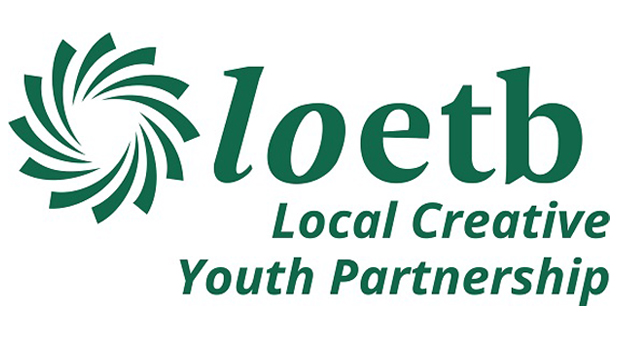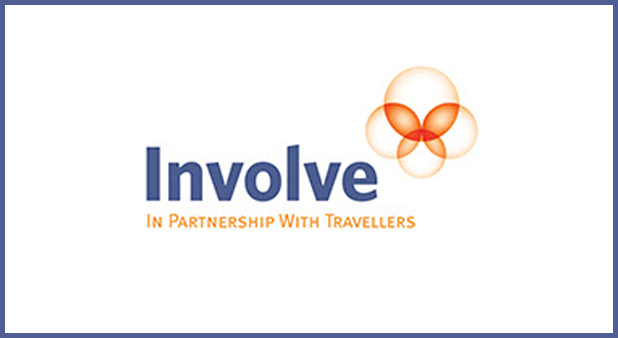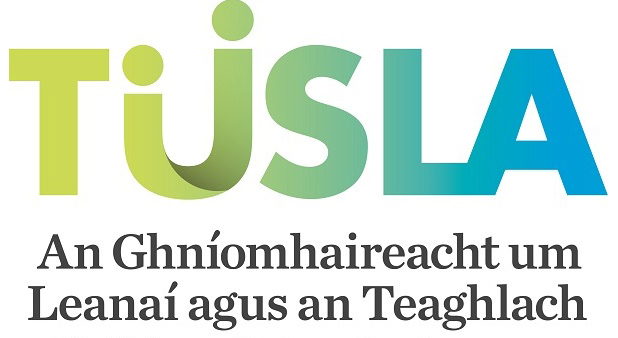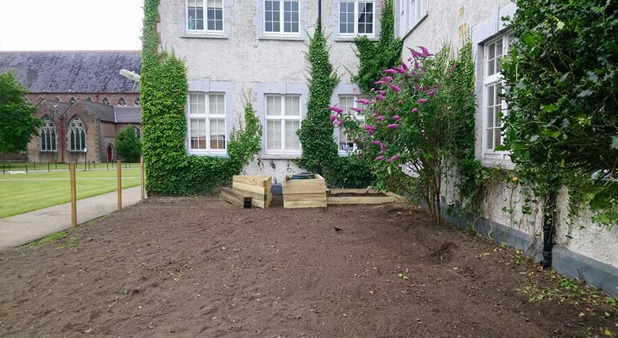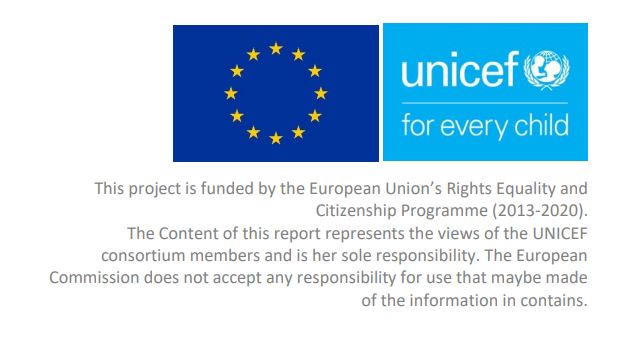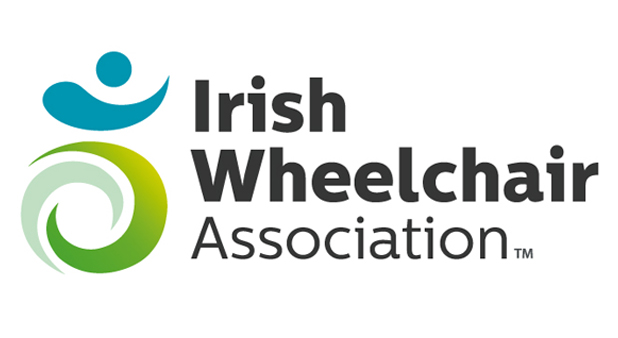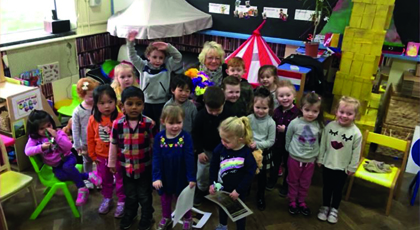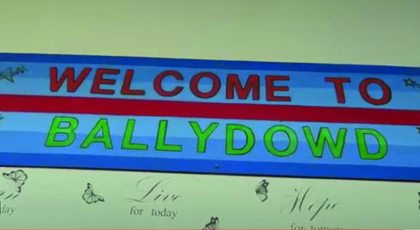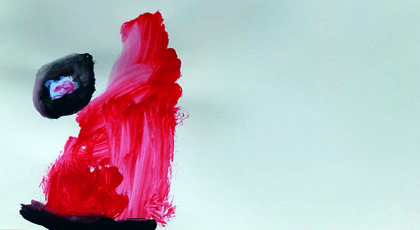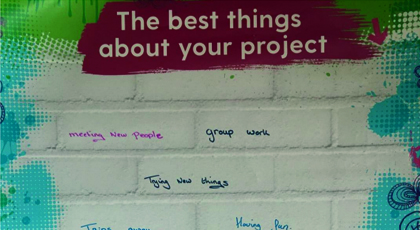Involving Young People in an Online Youth Mental Health Event
How Jigsaw involved young people in an online youth mental health event ‘Youth Talk, We Listen’
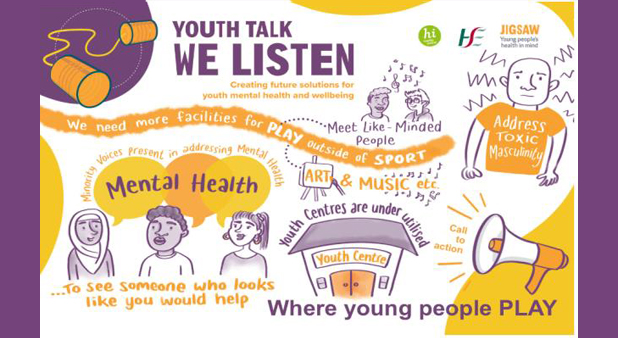
Background Information:
Jigsaw is the National Centre for Youth Mental Health in Ireland. At Jigsaw, we are here to make sure that every young person’s mental health is valued and supported. Mental health can affect every aspect of a young person’s life. We believe every young person must have the support that’s right for them, whatever they are going through. To find out more about what we do go to Jigsaw.ie/what-we-do
a) The project on which we involved young people in decision-making
On 25th June 2020, Jigsaw and HSE Health & Wellbeing co-hosted a unique and innovative online youth mental health event ‘Youth Talk, We Listen’ – Creating future solutions for youth mental health and wellbeing. Building on previous partnership working and collaboration between Jigsaw and HSE Health and Wellbeing, this event brought together approximately 80 young people from across the country, together with a broad range of stakeholders from Government Departments, HSE, Jigsaw and relevant NGOs to discuss youth mental health and wellbeing.
The event itself took place against a backdrop of some important policy and strategic developments nationally:
- The publication of ‘Sharing the Vision’ – the new National Mental Health Policy, highlighting a whole systems approach to mental health and providing a focus on prevention, promotion, and early intervention as well as service provision.
- The introduction, by the HSE of a Psychosocial Response Framework, particularly in
response to the Covid19 situation, which acknowledges that mental health and wellbeing is not the remit of the health sector alone; other Government Departments, Local Authorities, NGOs and the Community and Voluntary Sector all have a key role to play in a whole population-based response. - The development of a HSE National Mental Health Promotion Plan – providing an opportunity for the outcomes from this event to feed into this Plan.
- The further development of Jigsaw’s youth mental health promotion works in strengthening communities and influencing change.
- Furthermore, the event took place during the most challenging circumstances young people in Ireland have ever experienced with the Covid19 pandemic; while this did feature in the conversations on the day, it was not the primary focus; young people discussed and recommended actions to support their mental health and wellbeing into the future, which will require a whole-systems, whole of Government, multi-agency response.
b) The topic on which we were looking for their views
We wanted young people’s views on solutions to promoting youth mental health.
c) The reason we wanted their views
The reason we wanted their views were threefold:
- To provide young people with the opportunity to identify solutions and to bring ‘calls to action” that may have an impact on key policies and strategic developments nationally
- To consider with young people some of the key findings from the My World Survey 2 on Youth Mental Health, published in Nov. 2019 (by School of Psychology, UCD and Jigsaw)
- To listen to the views of young people themselves about their mental health and wellbeing experiences in the contexts of where they live, learn, work and play
d) The decision-makers that listened to their views
The key decision-makers at the event were the HSE Health and Wellbeing and Jigsaw, the national centre for youth mental health. There were several other key stakeholders and decision makers such as Spun Out, BeLongTo Youth Services, Foroige, the National Youth Council of Ireland, Children and Young People Service Committees (CYPCSC), the Irish Second-Level Students Union and others.
e) The young people who took part
The young people who took part in the event were aged 16 – 25 years of age. They came from a diverse range of backgrounds and geographic locations around Ireland. In the main they were young people who volunteered with partner stakeholders such as Jigsaw, Foroige and SpunOut.
How the children and young people were ensured SPACE, VOICE, AUDIENCE and INFLUENCE
Space: How we ensured a safe and inclusive space to hear the views of young people 
| Things we considered | What we did |
|---|---|
| The space or setting where we got their views | The session took place online given as we were unable to gather in a face-to-face fashion due to Government health restrictions in place at the time. This enabled us to use break out spaces to engage the voice of young people and allow for smaller groups, which would then feed into the main group. |
| How we identified the young people to be involved | The event was highlighted through partner organisations channels with young people that either volunteered with them or they had contact with. |
| How we involved those who were directly affected by the topic | Young people were “recruited” through Jigsaw and partnering organisations youth networks including volunteer and service user – The flier can be seen here. Jigsaw analytics show, as of 2022, that approx. 60% of our volunteers have an experience of using services such as Jigsaw or other mental health services in the community. This would tell us that in all probability more than half of the Jigsaw volunteers present would have a lived experience of some mental health difficulties. All young people have mental health, in the same way as they have physical or mental health, therefore the topic being discussed impact all young people present at the event. The issues relating to the promotion of mental health affect all young people so again the topics affected all young people present. |
| How early in the process they were involved in decision-making | Youth Advocates from Jigsaw were involved from the concept creation stage, in terms of outlining the purpose and focus of the event. Those advocates sat on the steering group that planned all elements of the event such naming it, identifying virtual venue, recruitment, planning for facilitation and many other elements that go into an event like this. |
| How the process was inclusive and accessible | Jigsaw and its partners advertised the event widely throughout their national networks to ensure as diverse a range of young people had the opportunity to attend. Young people were also used in advertisement videos to support peers in attending. Given Covid this work was hampered by the virtual nature of the event. |
| How we made sure they felt safe to express their views | All sessions were facilitated by Jigsaw Youth Advocates, staff members from Jigsaw and staff from HSE Health and Wellbeing. There were Jigsaw Clinicians available to support any young people that felt anxious or if any issues were to come up for them. |
| How we continued to involve them throughout the decision-making process | The event was planned by a collaborative working group including representatives from HSE Health and Wellbeing and staff and Youth Advocates from Jigsaw. After the event, volunteers from the 80 participants joined a further collaborative group to plan how action items might be progressed into 2021. |
Voice: How we gave young people a voice in decisions
| Things we considered | What we did |
|---|---|
| How we informed young people about the topics on which we wanted their views | A video, developed by Dr. Aileen O’Reilly, Research Manager in Jigsaw, provided an overview of some of the key findings from the My World Survey 2, particularly as they relate to the contexts of young peoples’ lives – where the live, learn, work and play. • It was made clear to young people that the breakout sessions would focus on these four areas’ (1) live (2) learn (3) work and (4) play. |
| How we informed them about level of influence they could have on decision-making | There was a very honest and collaborative approach taken from the outset. Given this was a new initiative there was no over promising of impact, or influence as it was unknown and ultimately young people would inform next steps. |
| The methods we used to get their views | All sessions were co-facilitated by young people as young people often feel more comfortable sharing with a peer rather than an adult. Visual minutes (Graphic Recording or Scribing) were used to represent the calls to action. Graphic harvesting (also known as Graphic Recording, Graphic Facilitation or Scribing) can be used online, or in person. The graphic harvester illustrated the issues discussed at Youth Talk: We Listen in real time. This approach supported the young people to stay connected throughout the event. |
| How we made sure they could identify topics they wanted to discuss | In the breakout sessions young people were facilitated to identify the key action areas. The youth facilitators made a list of actions to be fed back to the main event. |
| Please describe the topics and issues they raised | The young people identified four areas of focus that related to the contexts of young peoples’ lives – where the live, learn, work and play. Live:
Work:
Play:
Learn:
|
Audience: How we made sure that there was an audience (decision-makers) for young people’s views
| Things we considered | What we did |
|---|---|
| How we developed a report or record of the young people’s views | We used the graphic harvest as the main way of recording young people’s views. The views captured through the graphic harvesting were compiled into a written report – see full report here. Notes were taken in each breakout room to document young people’s views, which were also included in the written report |
| How we checked back with them that their views were accurately represented | We conducted evaluations using the rights-based child and youth feedback forms from the National Participation Framework |
| How we involved the decision-makers who are responsible for influencing change (other than yourself) | Decision-makers shared the space with young people and so were hearing directly from young people in real time. |
| At what point we involved decision makers other than ourselves in the process | Key decision makers such as HSE health and wellbeing were partners in this initiative from the start, but it was at the main event that we brought in other key decision makers and stakeholders. |
| How we supported young people to play a role in communicating their own views to decision-makers | Young people MC’d and facilitated the breakout rooms and so were communicating the views of the young people present throughout. |
Influence: How we made sure that young people’s views were taken seriously
| Things we considered | What we did |
|---|---|
| How young people were given updates at key points in the initiative | Following the “Youth Talk, We Listen” event, a smaller collaborative group was formed including young people with the aim of progressing the action areas in Live, Learn, Work and Play. Feedback to this group took the form of in person meetings. At later stages, we used Slack (a messaging programme) to share updates and to allow an ongoing dialogue between young people in the collaborative group and decision makers. |
| How their views were acted on by the appropriate decision-makers (what happened to their views) | The collaborative group worked across 2021 to explore the actions identified by young people at the event. The young people on the collaborative group decided to ask the HSE to include an action in the Mental Health Promotion Plan stating that “the HSE will create opportunities to ensure that the voices of children and young people are heard in the development of mental health and wellbeing initiatives”. This action will be led by statutory and non-statutory agencies and will ensure young people’s voices are central, to a host of projects across the lifetime of this plan 2022 – 27. |
| Whether we continually checked back with children and young people about the ways you used their views with decision-makers (if possible or appropriate) | Young people from the collaborative group co-chaired the meetings and were present at every meeting. Feedback was provided on a continuous basis on actions related to their voice and opinions, so they understood at all stages what was happening to their views. |
| How they were given full and age-appropriate feedback explaining how their views were used (or not) and the reasons for decisions taken | All participants that had registered for the original Youth Talk, We Listen event received the report developed which identified the actions, along with the graphic harvester illustrations. Further to this they received an update on the next steps and offering them to join the collaborative was being created. A further email was sent sharing the final outcome to all original participants with regards to the action in the HSE Mental Health Promotion Plan. |
| How we enabled them to evaluate the process throughout | The Youth Talk We Listen event itself was not evaluated. Regular evaluations were done with the young people in the collaborative group. |
| What the young people said in the evaluation | Below are some quotes from the evaluations by the young people on collaborative group: “It was difficult to get everyone’s opinion shared in such a short time frame” “Might have been nicer to have slightly longer to really talk about stuff!”. This feedback was taken into account and greater time afforded to break out room discussion at later meetings. Near the end of the collaborative group process and closing of the project one young person noted: “It was an honour to be part of the collaborative, and I look forward to what we decide to organise going forward”, in reference to the plans within the HSE Mental Health Promotion Plan. |
IMPACT
What changes were made because of children/young people giving their views?
The key effect or outcome was getting a clear action, with named led agencies, within the HSE Mental Health Promotion Plan 2022 – 27, which notes that the HSE along with partners will “create opportunities to ensure that the voices of children and young people are heard in the development of mental health and wellbeing initiatives”. We aim for this to result in greater impact from young people around Youth Mental Health Promotion across that five-year period.
The learning for our organisation
1. The key learning for our organisation from the process and outcome of involving young people in this project
There was a real learning curve through the process. The initial couple of large online events were really creative, dynamic and energised spaces where young people could share their voice in an open forum with key decisions makers. We quickly developed key action areas and moved to a smaller collaborative group.
This collaborative group of young people and decision makers began to come across challenges in moving the actions forward for various reason self-identified by the group (1) not being able to meet face to face (2) consistency of stakeholder engagement (3) identifying projects and programmes.
The key learning for the group was mostly around not having to spend large amounts of time considering new programmes or initiatives. Young people could have more impact if a space was created where they could be heard on projects/programmes that are happening, in review or that might in the planning phase. The group felt that when they were looking for solutions there were lots of answered or solutions already in existence, but young people were not aware of them or they were not youth friendly resources, which is an issue. So, in creating a space in the future were decision makers who are starting out on projects or look looking to review pieces can come to get input from young people will hopefully have instant impact on real world projects.
2. Looking back, how did the final outcome compare with our initial assumptions and those of other decision-makers involved in the process?
The final outcome was not the outcome the group set out to achieve, which is often the case in new initiatives where goals are fluid and need to be given the nature of the work. Ultimately the process led to a better hopefully a more impactful outcome, which only time will tell.
3. What worked well?
- Knowing when to change the direction of the group and reassess what success looked like.
- The mixture of young people and decision makers within the space
- The collaborative nature of the work.
- Setting values for the collaboration from early on
- Having young people plan and co-chair groups and meetings
- Using creative communications like Slack
- Using creative pieces like graphic harvesting
- Gaining feedback from young people using the Lundy model so we could shift and change approach when/if needed
4. If we were doing it again, is there anything we would do differently?
We would have really liked to have had more in person sessions, which just was not possible at the time.
Reduce the length of the second element “the collaborative” so keep time frames tighter in order to retain energy.
Having the right decision makers is critical to work like this so an increased focus on stakeholder retention and support. We hope this is resolved in the future by having decision makers “pitch” to come into the space we create to consult with young people.

